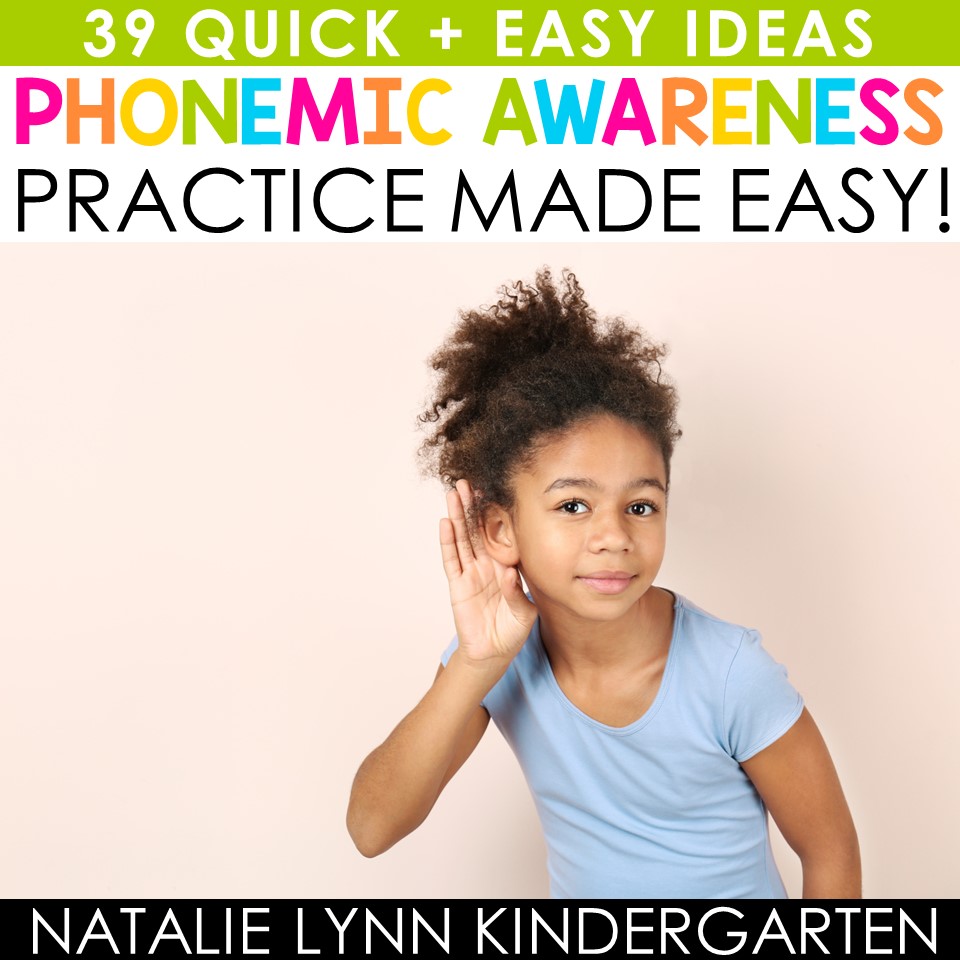
In this blog post: Add these 39 quick and fun phonemic awareness activities for preschool, pre-k, kindergarten or first grade into your daily routines to build strong foundational literacy and phonemic awareness skills.
As a kindergarten teacher, you know the importance of building strong phonological awareness and phonemic awareness skills in our early readers (or as a preschool, pre-k, first, or second grade teacher).
The Science of Reading tells us that a child’s phonological awareness and phonemic awareness skills are a good predictor of future reading success.
There’s a reason they call them foundational literacy skills!
But thankfully, we also know that adding daily phonemic awareness practice into your routines, but it doesn’t have to take a lot of time or materials. In fact, spending 5-10 minutes a day on phonological awareness activities is usually plenty in Kindergarten.
In this blog post, I will explain what phonemic awareness is, why it’s important, and give you easy and fun phonemic awareness activities to add use whole group or in small groups.
Phonological vs Phonemic Awareness
While often used interchangeably, phonological awareness skills and phonemic awareness skills are NOT the same thing.
It’s kind of like a rectangle and a square. A square is a rectangle, but a rectangle isn’t always a square.
Phonemic awareness is a part of phonological awareness, but phonological awareness activities don’t always include phonemic awareness skills.

Phonological awareness is the umbrella term for being able to hear and manipulate sounds in spoken language. This can include recognizing complete words within sentences, identifying words that rhyme, breaking words into syllables, or identifying individual sounds in words.
Strong phonological awareness skills are still important for our Kindergarten students, because they are prerequisite to the more advanced phonological awareness skills known as phonemic awareness skills.
Some easy phonological awareness activities include:
- Reading nursery rhymes
- Counting whole words in sentences
- Saying a word and having students identify the rhyming word
- Having students match rhyming picture cards
- Giving students two words that rhyme and one that doesn’t and then asking students to identify the odd word out
- Saying a word and having students identify the number of syllables
- Having students add or delete syllables in a word (this is a more advanced phonological awareness skill)
What is phonemic awareness?
Phonemic awareness is a part of phonological awareness. It is the ability to identify and manipulate individual sounds within a spoken word.
Phonemic awareness skills are the most difficult and usually the last of a child’s phonological awareness skills to develop.
It includes segmenting, blending, deleting, and substituting individual sounds within a given word.
Phonemic awareness skills tend to develop in this order:
- Phoneme isolation
- Phoneme discrimination
- Phoneme blending
- Phoneme segmentation
- Phoneme addition
- Phoneme deletion
- Phoneme substitution
Within those skill subsets, you can break them down further by the number of sounds a child is working with within that skill. Generally, it gets more difficult as you go from 2 phonemes to 3 phoneme CVC words to 3 phoneme words with digraphs to 4 phoneme words and beyond.
So now, let’s look at some different phonemic awareness activities for kindergarten that will support each of those skills.
Phoneme Isolation Activities
Phoneme isolation means hearing and identifying individual sounds within whole words. In order to be successful and isolating phonemes, students first need to understand that a spoken word is made up of individual sounds.
When working on phoneme isolation, start with the beginning sound, then the last sound, and finally the middle sound.

Some fun phonemic awareness activities to practice phoneme isolation include:
- Let students be sound detectives! You will say a word and they will identify either the first sound, ending sound, or vowel sound.
- Play Sounds I Spy. To play this fun game, you will look for an object around the room and then say, “I spy with my little eye a word that begins with [the initial sound].” Students will identify the word you’re thinking of!
- Alliteration sentences. A fun way to practice phoneme isolation is with an alliteration sentence such as, “Miss Mary Made Macaroni.” Students will identify the common first sound each word started with.
- Where is my sound? Say a sound in a word. Students will identify where the sound is located within the word. A great way to make this more interactive by placing chips for each sound and having students push up the chip where they hear the sound within the word. Find the clip card version here.
- Playdough smash. Have students make balls of dough to represent the individual sounds within a word. Say a sound and then have students smash the ball that represents where the sound is located.
Once young children are able to isolate and identify individual sounds in words, you can move into phoneme discrimination.
Phoneme Discrimination Activities
Phoneme discrimination still works on isolating single sounds, but students are listening to multiple sounds and either sorting them by sound or identifying the odd sound out.
Fun ways to practice phoneme discrimination include:
- Same sound sorts. Choose two focus sounds; generally a sound that students are secure in and one that they are practicing. Students will sort picture cards by their initial, medial, or final sound.
These free Same Sound picture sorts will help students practice phoneme isolation and discrimination with beginning sounds. Choose two sounds and have students identify the key image and their beginning sound. Then, students will help sort pictures to the correct initial sound picture.
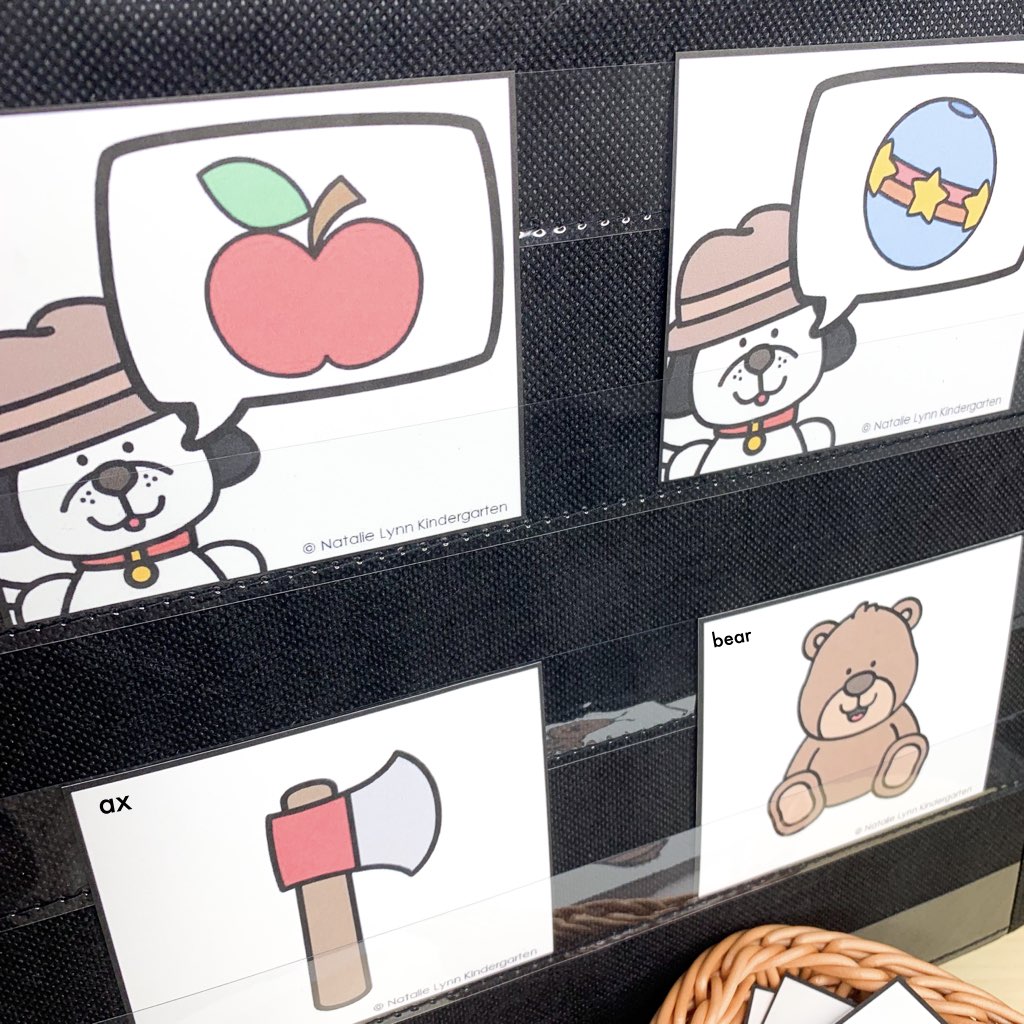

You can download these free beginning sounds picture cards here.
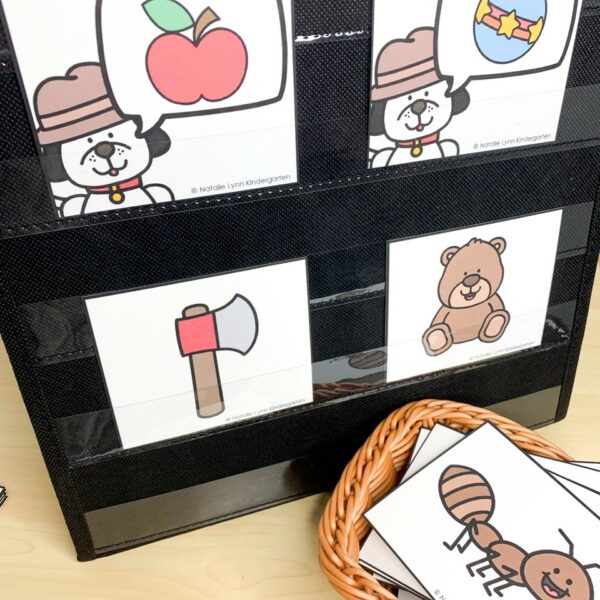
Do you love free stuff?
Same Sounds Picture Sorts
Download these beginning sound picture sorts to practice phoneme isolation and discrimination.
Phoneme discrimination games
You can then use these picture cards for more sound discrimination games including:
- Odd One Out. This activity is also known as phoneme categorization. Put out three picture cards; 2 that have the same beginning sound and 1 that does not. Have students identify the two that begin the same and the odd one out.
- Same Sounds Memory. You can use these picture cards to create a fun game by placing same sound pairs face down. Students can take turns flipping over the printable cards to find the beginning sound matches.
- Which One Matches? Put out three picture cards that all have a different beginning sound – cat, bear, ant. Then, hold up a picture card (for example, apple) and ask students to identify which one is the match.
Of course, sound discrimination does not have to happen with only beginning sounds. Once your students have mastered beginning sound discrimination, move into ending sounds and then middle sounds.
You can also then use these sound games once you get into more advanced phonics skills like blends, r-controlled vowels, and more.
Phoneme Blending Activities
Now that your students understand that words are made up of individual sounds, the next step is to put those sounds together to make whole words.
Phoneme Blending is an important skill for our students to master because it is something that fluent readers do constantly as they read. Eventually, they will be blending sounds that they read, but for now, we will start completely oral.
Fun phonemic awareness activities to practice phoneme blending include:
- Chip It. Have students push up a magnetic chip as you say each sound. Then, have them use a magnetic wand to swipe the chips from left to right as they blend the word together.
- Mystery Words. To play this fun game, you will put CVC word picture cards out on a pocket chart. You will say a word sound-by-sound (/m//a//p/) and then ask students to identify your mystery word.
- Slide the Sounds. Slides are a great representation of phoneme blending, because students can visualize how they are “sliding through the sounds.” Grab a cube and start it at the top of the slide. You will say the word sound by sound. Then, students will slide the cube down as they blend the individual sounds together.
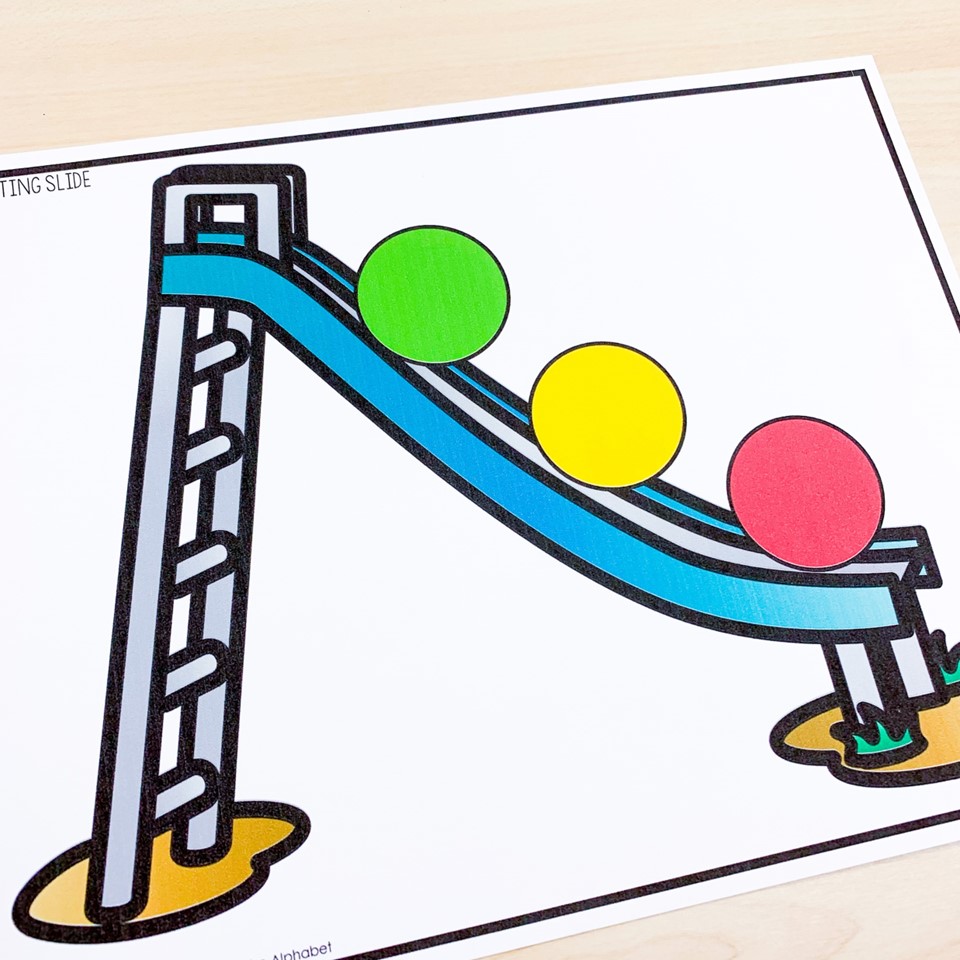
- Drive the Sounds. Put out cubes or chips for each sound (or use the free blending mats in the phonics tool kit). You will say the sounds, and then students will drive the car along as they blend them together. The faster they blend, the faster they can drive the car.
- Draw It. This is a fun game for both whole group and small groups! Give each student a dry erase board and marker. You will say a word sound by sound and then have students blend it. They will draw a picture of the word and hold up their board.
Remember, if your students have a difficult time with phoneme blending, you can start small with 2-sound words and then move into 3-sound words.

Phoneme Segmentation Activities
Phoneme segmentation is an important skill, because students will use it all of the time while writing. When writing words, our students need to be able to take a whole word and break it into its individual phonemes.
As a kindergarten teacher, most of your year will probably be spent on phoneme segmentation and blending. And that’s okay! It is an easy phonemic awareness activity to add in whole group or in small groups.
Here are the best phoneme segmentation activities you can try:
- Dough Smash. Have students make balls of playdough to represent the sounds. You will say a word and have students smash the dough as they say each sound.
- Slinky Sounds. Let students stretch a slinky as they say each sound. Then they can push the slinky back together as they blend the word.
- Chip Push Ups. Have students put out chips. They will say the word and then push up one chip as they say each sound. You can then have them swipe the chips with a magnetic wand and blend them back together for extra phoneme blending practice if you want.
- Segmenting Ferris Wheel. Students will take their “ferris wheel car” and move it around the wheel as they break the word up into separate sounds.
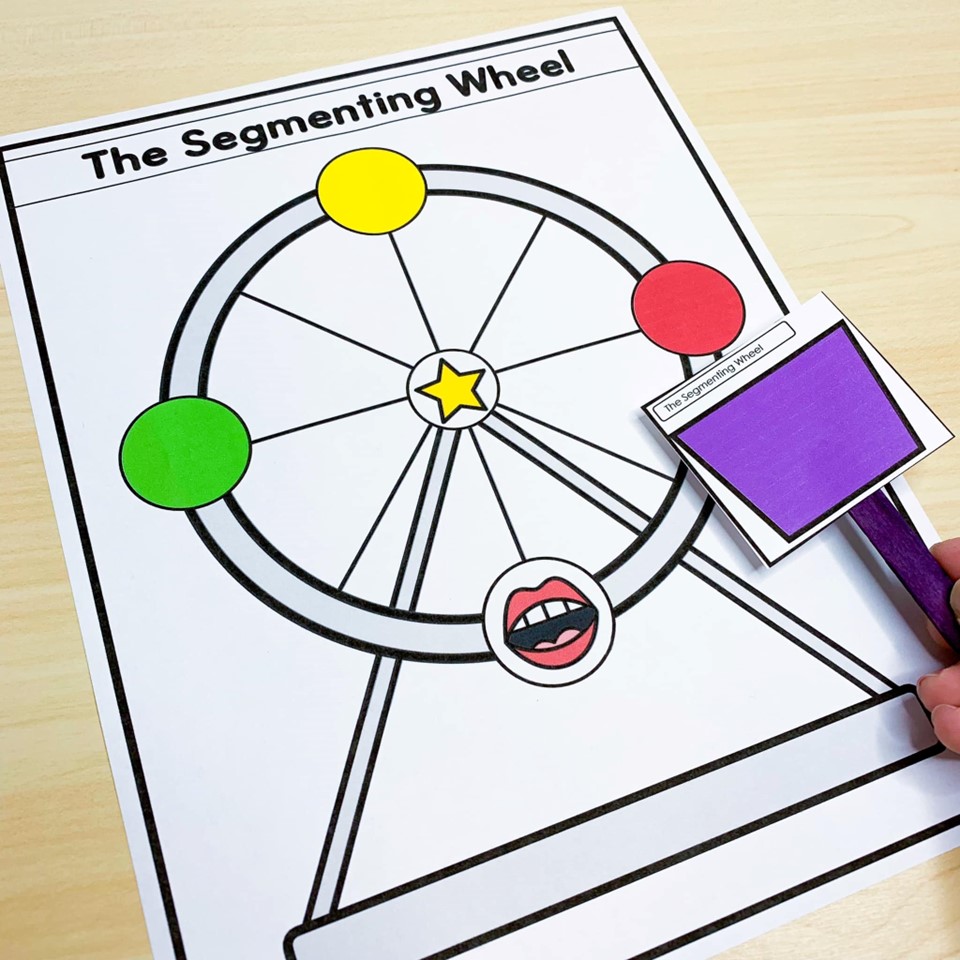
You can grab the Segmenting Ferris Wheel as a free download here.
I also have a rollercoaster version, a school bus version, and a winter sports version of these segmenting and blending mats!
Even more phoneme segmentation activities!
More fun phonemic awareness activities include:
- Segmenting Pipe Cleaners. Add pony beads to a pipe cleaner. Students can push the beads to the left as they say each sound. Then, they can slide them all back to the right as they blend the word back together.
- Dab and Segment. There is just something about young children and dot markers – they can’t get enough of them! Grab a dot marker and have students dab as they say each sound (bonus: this is great for fine motor skills as well!).
- Tap the Sounds. Adding in a kinesthetic portion is a great way to help students feel the individual sounds. Students can use their finger to tap the sounds on the table, or their hand to tap the sounds down their arm as they segment.
- Pound the Sounds. This phonemic awareness activity is basically identical, but instead of tapping the sounds, students will make a fist and pound the sounds.
- Hop the Sounds. You can create a fun game by putting down paper plates, cups, or even sit spots to represent the individual sounds. Students can hop along the spots as the segment the word.
- Pop the Sounds. Are fidget poppers still a trend? Even if they aren’t, pop its are a great way to practice segmenting words. Students can pop a bubble for each sound that they hear.
You can see all of these ideas in action and read more in this blog post: Fun and Hands-On Segmenting and Blending Activities.
What is Phoneme Manipulation?
Now that your students have mastered phoneme isolation, blending, and segmentation, they are ready to move into the more advanced phonemic awareness skill of phoneme manipulation.
Phoneme manipulation includes adding, deleting, and substituting sounds to make a new word.
Personally, I believe that this is a skill we often ask our students to try too early. This is a difficult phonemic awareness skill and it can be frustrating at first!
Children need to have strong phonemic awareness skills and understand the individual sounds and how they work together before they can manipulate the sounds in different ways.
Once your students are ready to move into phoneme manipulation skills, it can be difficult to find daily routines that support these skills. We just don’t talk about them as much as segmenting and blending!
That’s why I’ve come up with this list of the best phonemic awareness activities you can try.
Phoneme Addition Activities
Phoneme addition means that you are adding on a sound to create a new word. For example, you could say “Start with the word ‘bee.’ Now add a /t/ at the the end.” to get the word “beet.”
I’ve found that, while phoneme addition and deletion often go hand in hand, it is must harder to find phonemic awareness activities that practice phoneme addition!
Phoneme addition activities to try:
- What’s My Word? As stated above, you can easily add this into your daily routines with simple oral practice. Just say a word and then ask students to add on a sound to make a new word.
- Add Manipulatives. While phonemic awareness activities are oral, I find that it’s helpful to make them more concrete with manipulatives. Have students put out cubes or chips for each sound in the original word. Then, have them add a cube or chip to represent the new sound and then blend those together.
- Mystery Words. Put out pictures of the new words. Start with your original word and tell students the sound to add. Then, have them find the picture that shows the new word.

Phoneme Deletion Activities
Phoneme deletion means that you start with a word and then ask students to delete a sound to make a new word. For example, you may start with the word “beet” and say “take away the /t/” to make the new word “bee.”
Here are some fun phoneme deletion activities to try:
- Slide It Out. Grab some manipulatives and put one out for each sound in the original word. Have students slide out the manipulative that represents the deleted sound and then blend what’s left together.
- Picture Match. Put out two pictures; one that shows the new word and one that does not. You will say a word and have students delete a sound. Then, have them identify the picture that matches the new word.
Phoneme Substitution Activities
Phoneme substitution is currently one of the “hot” phonemic awareness skills. What do I mean by that? Everyone wants to focus on phoneme substitution because it’s fun and it really is powerful.
But it is important to remember that phoneme substitution is one of the LAST phonemic awareness skills to develop.
Our students need to be strong in previous phonemic awareness skills before we move into this. That’s why I wouldn’t recommend trying phoneme substitution with early readers until they’ve mastered earlier skills like segmenting and blending.
But once your students are ready for phoneme substitution, there are so many great ways to practice!
- Index Cards. When you are beginning phoneme substitution, one of my favorite ways to physically show the process is with index cards. You can read more about this phonemic awareness activity here.
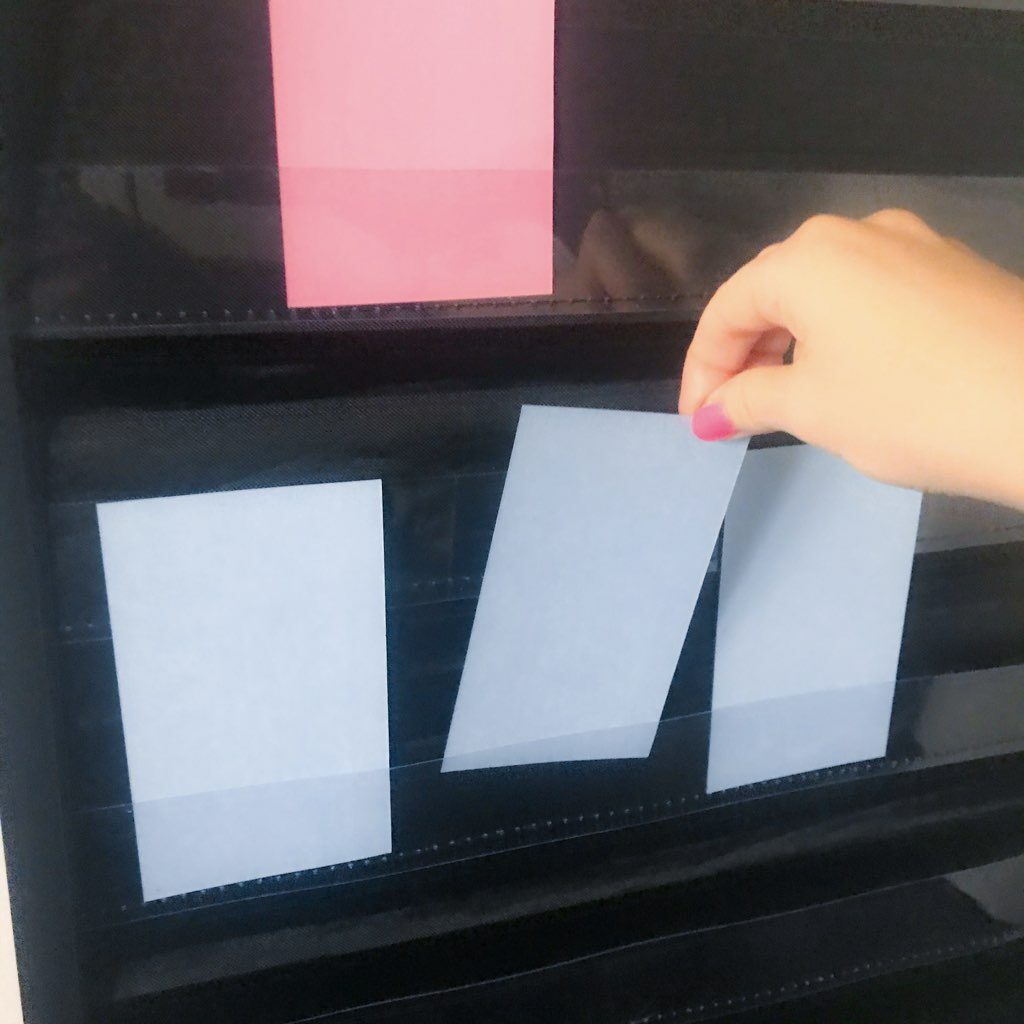
- Math Tiles. Another great way to make the concept of phoneme substitution concrete is with math tiles. Students can put out a math tile for each individual sound. Then, they can push up a tile where the sound changes, and push in a new tile to represent the new sound.
- Where Did the Sound Change? A different way to work with phoneme substitution is to identify where the sound changed. You can say or show picture cards of two different words like cat and cab. Then, have students identify where the sound changed. You can use the clip card version as an independent practice activity.
- Pop the Sounds. Pretend the sounds are popcorn kernels and “pop” up the sound that changed to reveal the new sound beneath. You can download this activity for free here.
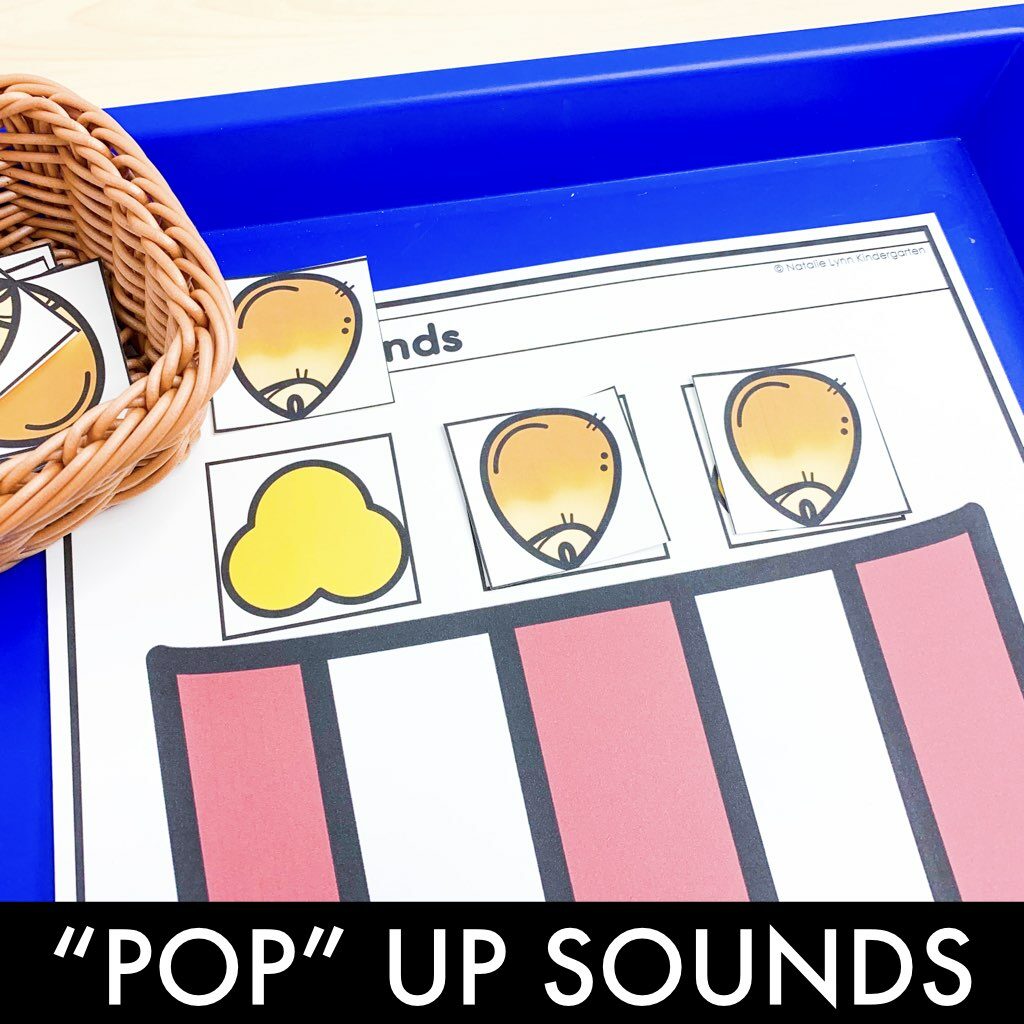
- Word Families. Word families are a great way to work on phoneme substitution with beginning sounds. Students can see how we can change the beginning sound to create a new word.
Combining Phonemic Awareness with Phonics
While phonemic awareness is not the same as phonics, once students are ready, you can combine phonemic awareness and phonics skills to increase the impact of your daily phonemic awareness lesson plans.
For phoneme substitution, this can look like:
- Word chains. When creating word chains, students can build or write a new word by changing one sound in the previous word. They will continue to change one sound as they make a while list of new words.
- Solo Cup Sounds. For this fun game, just grab some solo cups and write letters on them! Put out three stacks of cups and have students read the word. Then, lift up a cup to reveal a new letter and have students read the new word.
- Sticky Note Sounds. Write letters on sticky notes and use them to build a word. Then, swap out one of the sticky notes for a new letter. Have students read the new word.
- Mystery Word. This is a slightly harder version of Sticky Note Sounds. Write letters on sticky notes and use them to build a word. Then, take away one of the sticky notes. Say the new word and have students identify what sound and letter need to go in that spot.
- What Needs to Change? Yet another version. You will need your sticky note word again. This time, don’t take any letters away. Say the new word and have students identify where the word needs to change.
In Conclusion
The Science of Reading tells us that strong phonemic awareness skills are essential for our early readers. Building a strong background in these foundational literacy skills will set our students up for success as fluent readers.
You can build these skills by adding in just a few minutes by adding a phonemic awareness activity to your whole group lesson or small groups. Hopefully this blog post gave you some quick and easy phonemic awareness activities for Kindergarten and first grade students!
Find more hands-on phonemic awareness activities in the Phonological and Phonemic Awareness Endless Bundle!


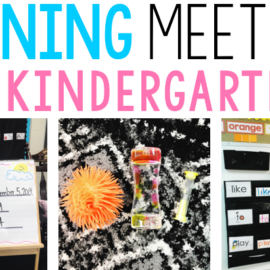
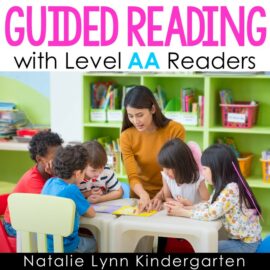
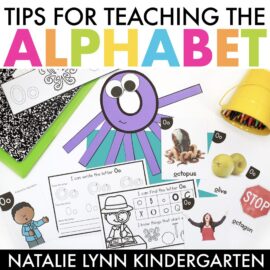

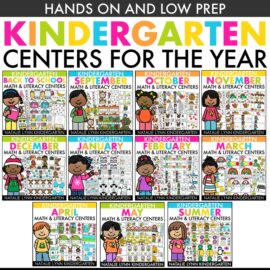
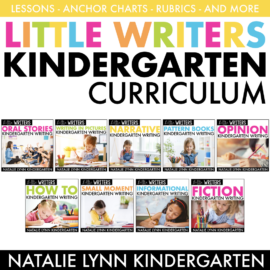
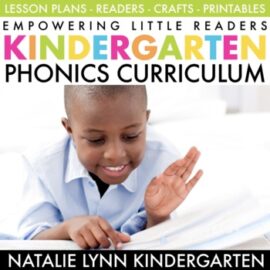
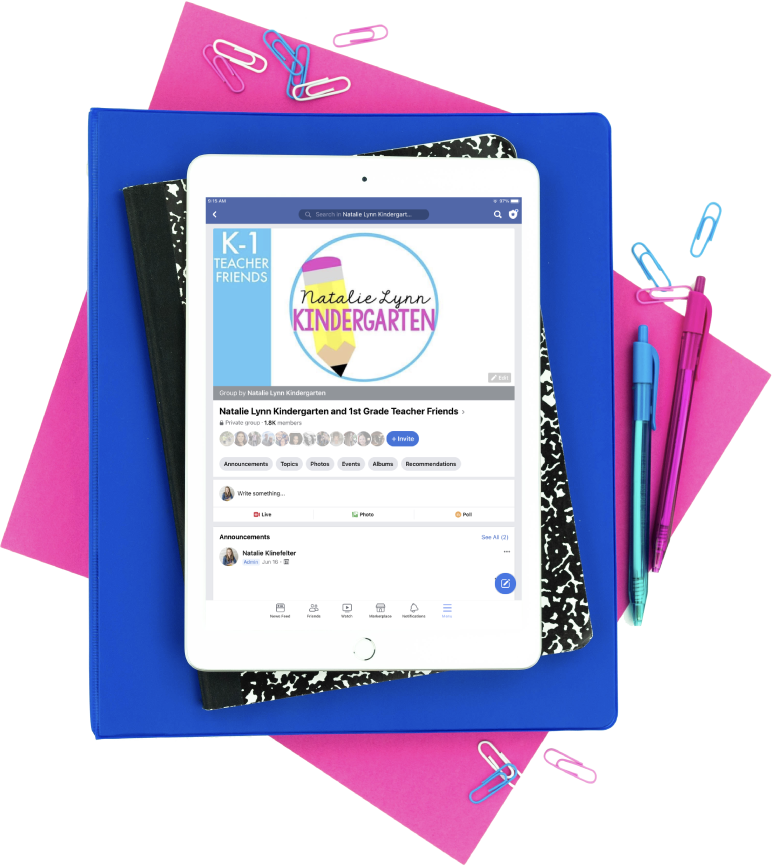

Wow, this post is a goldmine of engaging and effective phonemic awareness exercises. Great job on providing such a diverse range of activities!
Thank you so much! I’m so glad it was helpful.